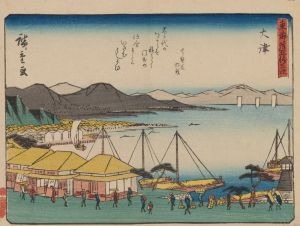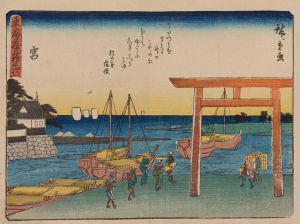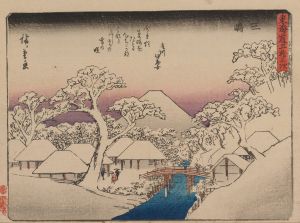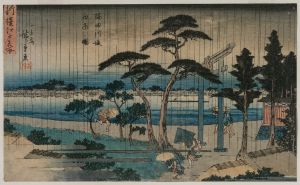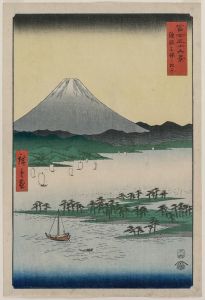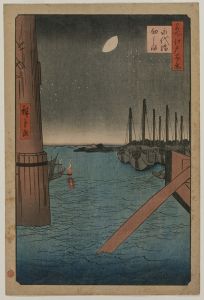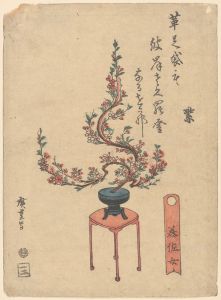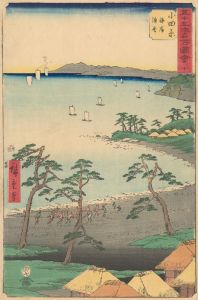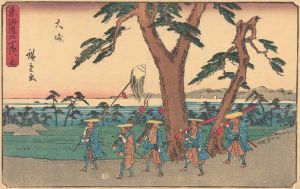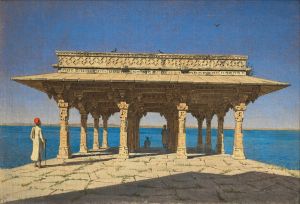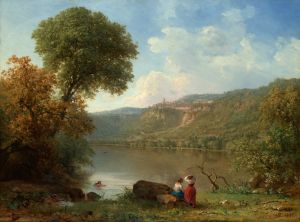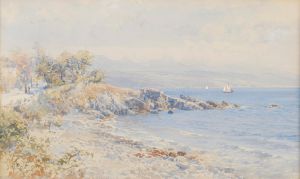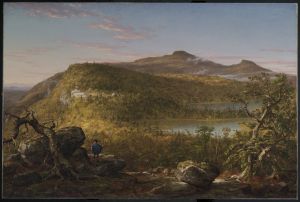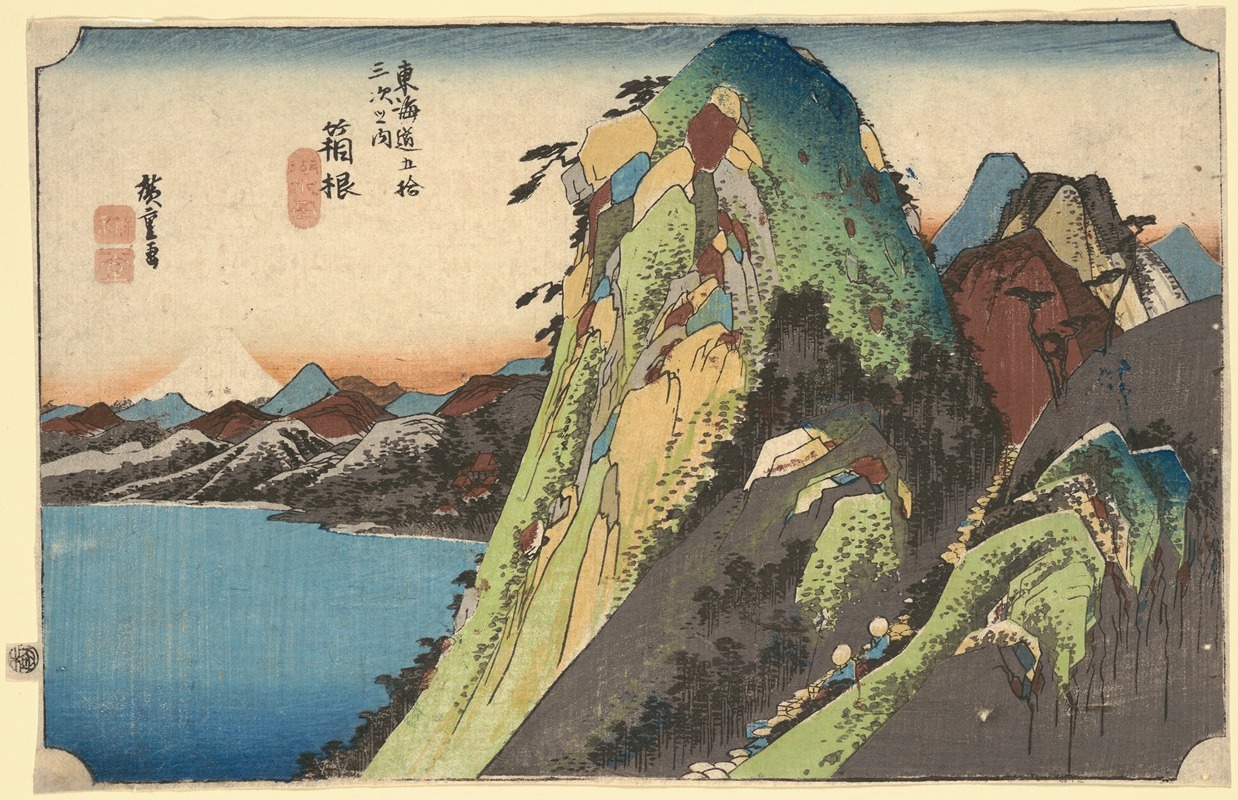
Hakone; The Lake
A hand-painted replica of Andō Hiroshige’s masterpiece Hakone; The Lake, meticulously crafted by professional artists to capture the true essence of the original. Each piece is created with museum-quality canvas and rare mineral pigments, carefully painted by experienced artists with delicate brushstrokes and rich, layered colors to perfectly recreate the texture of the original artwork. Unlike machine-printed reproductions, this hand-painted version brings the painting to life, infused with the artist’s emotions and skill in every stroke. Whether for personal collection or home decoration, it instantly elevates the artistic atmosphere of any space.
Hakone; The Lake is a woodblock print by the renowned Japanese ukiyo-e artist Andō Hiroshige, also known as Utagawa Hiroshige. This artwork is part of Hiroshige's celebrated series "The Fifty-three Stations of the Tōkaidō" (Tōkaidō Gojūsan-tsugi), which was first published between 1833 and 1834. The series depicts various scenic spots along the Tōkaidō road, a vital route connecting Edo (modern-day Tokyo) to Kyoto during the Edo period in Japan.
Hakone is one of the stations along the Tōkaidō, known for its mountainous terrain and beautiful natural scenery. Hiroshige's depiction of Hakone captures the essence of this region, focusing on the serene beauty of Lake Ashi, also known as Ashinoko. The print illustrates the tranquil waters of the lake, surrounded by lush greenery and distant mountains, conveying a sense of peace and natural splendor.
Hiroshige's work is characterized by its use of vibrant colors and attention to detail, which are evident in this print. The composition of Hakone; The Lake demonstrates Hiroshige's mastery in capturing the interplay between light and shadow, as well as his ability to evoke the atmosphere of a particular place. The print is a fine example of Hiroshige's skill in portraying landscapes, a genre in which he excelled and for which he is best known.
The Tōkaidō series was highly popular during Hiroshige's time and remains one of his most famous works. It played a significant role in popularizing the ukiyo-e genre and influenced many Western artists, including the Impressionists, who admired Hiroshige's innovative use of perspective and color. The series not only served as a visual travelogue for those who could not journey along the Tōkaidō themselves but also as a celebration of Japan's natural beauty and cultural heritage.
Hiroshige's prints, including Hakone; The Lake, were produced using the traditional ukiyo-e technique, which involved carving images into wooden blocks, inking them, and then pressing them onto paper. This method allowed for multiple copies to be made, making the art form accessible to a wide audience. The prints were often sold as souvenirs to travelers and collectors, contributing to their widespread distribution and enduring popularity.
Today, Hiroshige's works, including Hakone; The Lake, are held in high regard and can be found in major art collections and museums around the world. They continue to be studied and appreciated for their artistic merit and historical significance, offering insight into the landscapes and culture of Edo-period Japan. Hiroshige's legacy as one of the foremost ukiyo-e artists endures, with his prints remaining a testament to his artistic vision and the beauty of the Japanese landscape.





